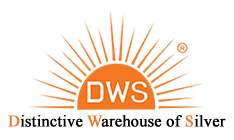- Written By Team DWS
- Festivals
- September 05, 2024
Unlocking Potential: The Importance of Literacy on International Literacy Day
Every year on September 8th, the world comes together to celebrate International Literacy Day—a day designated by UNESCO to raise awareness and encourage efforts towards improving literacy worldwide. The significance of this occasion lies not only in acknowledging the achievements made in promoting literacy but also in recognizing the barriers that persist in a global society, where millions remain illiterate. As we delve into the theme of this year’s observance, "Unlocking Potential," we uncover the profound impact that literacy has on individuals and communities.
-dws638616930390863455.jpg)
Understanding Literacy: More than Just Reading and Writing
At its core, literacy is the ability to read and write effectively. However, it extends far beyond these basic skills. True literacy is about empowerment—enabling individuals to access information, engage in critical thinking, communicate effectively, and make informed decisions. In a world driven by information and technology, literacy forms the foundation for personal and societal growth, opening doors to opportunities that can transform lives.
For children, literacy is essential for academic success. Research consistently shows that children who can read proficiently by the age of eight are more likely to succeed in their educational pursuits. This early proficiency sets the stage for lifelong learning and security within a rapidly changing job market. In adulthood, individuals with strong literacy skills are better equipped to navigate the complexities of modern life, from understanding medical instructions to participating meaningfully in democratic processes.
Breaking Barriers: The Global Literacy Crisis
Despite the acknowledged importance of literacy, a staggering 773 million adults worldwide lack basic reading and writing skills, with approximately 617 million children not reaching minimum proficiency levels in reading and mathematics. These numbers are not just statistics; they represent a crisis that stifles human potential and perpetuates cycles of poverty and inequality.
Many factors contribute to this global literacy crisis, including inadequate educational infrastructure, socioeconomic disparities, gender inequality, and conflict. In many low-income regions, access to quality education remains limited, where schools face underfunding, lack of resources, and insufficient trained educators. In certain areas, cultural practices often discourage education for girls or marginalized groups, further exacerbating the gender gap in literacy rates.
Literacy as a Catalyst for Change
Celebrating International Literacy Day serves as a reminder of the urgent need to address these challenges and work towards solutions that promote literacy for all. When individuals are literate, they not only uplift themselves but also strengthen their communities and contribute to national development.
Literacy is closely linked to economic growth. Economies thrive when their populace can interpret information, problem-solve, and innovate. Higher literacy rates lead to improved workforce skills, which translate to increased productivity and a more engaged citizenry. Additionally, literate citizens are more likely to participate in civic activities, voice their opinions, and hold leaders accountable—fostering a more democratic and just society.
Empowering women through literacy delineates a powerful narrative of progress. Studies show that when women are educated, they are more likely to ensure their children receive an education as well, breaking the cycle of illiteracy for future generations. Literacy enables women to participate in the labor force, promotes gender equality, and enhances health outcomes for families.
Innovative Approaches to Promote Literacy
As we reflect upon the importance of literacy, it is essential to embrace innovative approaches to promote education. Technology has emerged as a powerful tool in the quest for literacy. Mobile learning applications, e-books, and online courses can reach individuals in remote areas, allowing for educational access where traditional methods may falter.
Partnerships between governments, non-profit organizations, and private sectors can create sustainable models aimed at increasing literacy. Community libraries, reading clubs, and adult literacy programs can serve as local hubs of learning, fostering an environment where reading thrives.
Additionally, integrating literacy into broader development agendas—such as health, agriculture, and economic development—can create a holistic approach to empowerment. By linking literacy with real-life applications, individuals can see the value of learning, motivating them to engage with educational resources.
-dws638610922939583770.jpg)
International Literacy Day: Your FAQs Answered!
1. What is International Literacy Day?
International Literacy Day is observed annually on September 8th to raise awareness about the importance of literacy for individuals, communities, and societies. It highlights the need for improved literacy rates worldwide and promotes literacy as a fundamental human right.
2. When was International Literacy Day established?
International Literacy Day was established by UNESCO (United Nations Educational, Scientific and Cultural Organization) in 1966. The first celebration took place on September 8, 1967.
3. What is the theme for International Literacy Day?
Each year, International Literacy Day has a specific theme set by UNESCO to address current literacy challenges. The theme changes annually, focusing on various aspects of literacy in contemporary society.
4. How is International Literacy Day celebrated?
International Literacy Day is celebrated through various events and activities worldwide, including educational programs, workshops, community events, public discussions, and campaigns aimed at promoting literacy and education for all.
5. What is the importance of literacy?
Literacy is essential for personal and societal development. It empowers individuals to make informed decisions, improves employment opportunities, enhances communication skills, and fosters critical thinking. At a broader level, high literacy rates contribute to economic growth, social development, and improved health outcomes.
6. Who can participate in International Literacy Day?
Anyone can participate in International Literacy Day activities—governments, organizations, educators, students, and members of the community. Participation may include organizing events, advocating for literacy programs, or simply spreading awareness through social media.
7. What are some global literacy statistics?
While global literacy rates have improved over the decades, many challenges still exist. According to UNESCO, as of the latest available data, about 773 million adults around the world still lack basic literacy skills. Literacy rates also vary significantly by region, gender, and age group.
8. How can I support literacy initiatives?
You can support literacy initiatives by volunteering with local organizations, donating to literacy programs, participating in awareness campaigns, and advocating for policies that promote education and literacy. Additionally, you can help by donating books or resources to those in need.
9. Are there any resources available for learning more about literacy?
Yes, numerous organizations and websites provide valuable resources for learning more about literacy. UNESCO, the International Literacy Association, local libraries, and educational NGOs often offer reports, toolkits, and educational materials on literacy initiatives and strategies.
10. How does literacy impact economic development?
Literacy contributes significantly to economic development. Higher literacy rates lead to a more skilled workforce, increased productivity, and innovation. It also helps reduce poverty, improve health outcomes, and enhance participation in civic activities, ultimately contributing to sustainable economic growth.
Feel free to modify or add to these FAQs according to your specific needs or audience!
Conclusion: A Collective Responsibility
On this International Literacy Day, let us renew our commitment to unlocking the potential that literacy holds. It is a collective responsibility—to advocate for inclusive educational policies, support literacy programs, and engage in community efforts that address the root causes of illiteracy.
By recognizing that literacy is a right, not a privilege, we can take significant strides towards ensuring that every individual can read, write, and thrive. Together, we can empower future generations, transform societies, and build a world where knowledge truly is the key that unlocks human potential.
Popular on Blogs

Black Tourmaline: Meaning, Healing Properties, Fascinating Facts, Powerful Attributes, Versatile Uses, and Beyond
September 05, 2023 / BY Team DWS
Black Tourmaline, also known as Schorl, is a highly revered crystal with incredible metaphysical properties. It derives its name from the Dutch word "turamali," meaning "stone with ..

Carnelian Stone: Meaning, Healing Properties, Power, Facts, Color, Uses and More
December 26, 2023 / BY Team DWS
Carnelian is a vibrant and captivating gemstone that holds a plethora of meanings, healing properties, and powers. Its warm and fiery energy makes it a popular choice among crystal ..

Citrine: Exploring its Meaning, Healing Properties, Fascinating Facts, Powers, Versatile Uses, and Much More
November 18, 2023 / BY Team DWS
Citrine, with its warm golden hues, has captured the attention and imagination of people for centuries. This beautiful gemstone, commonly associated with wealth and prosperity, hol ..

Black Onyx: Unveiling the Meaning, Healing Properties, Fascinating Facts, Powerful Attributes, Versatile Uses, and Beyond
July 25, 2023 / BY Team DWS
Black Onyx, a striking gemstone admired for its deep black hue and elegant appearance, has captivated people for centuries. In this comprehensive guide, we will delve into the mean ..

Unveiling the Mysteries of Turquoise Stone: Exploring its Meaning, Healing Properties, Power, Facts, Color, Uses, and More
December 05, 2023 / BY Team DWS
Turquoise, with its captivating blue-green hue, has been adorning jewelry and artifacts for centuries. This striking stone has a rich history, rich symbolism, and a plethora of int ..

The History Behind The Popularity of Red Agate
December 23, 2022 / BY Team DWS
An Agate is a type of magma rock that takes many years till it is washed out naturally into the water. And that is the reason this stone has elements of water. This beautiful stone ..

Bloodstone: Unveiling the Meaning, Healing Properties, Facts, Powers, Uses, and More
August 21, 2023 / BY Team DWS
Bloodstone, with its captivating deep green color with specks of red, is a mesmerizing gemstone that has fascinated civilizations for centuries. It possesses unique healing propert ..

Plan a Perfect Valentine's Week with Our Valentine Week List 2025
January 22, 2024 / BY Team DWS
Valentine's Day is undoubtedly the most romantic day of the year, but we believe that one day is just not enough to express your love and make your partner feel special. That's why ..


